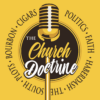chevron_left
-
 play_arrow
play_arrow
The CRUSADE Radio Network CRUSADE Radio Network
-
 play_arrow
play_arrow
The Church Doctrine Episode 2 - O Brother, Wherefore Art Thou? The Church Doctrine Episode 2
-
 play_arrow
play_arrow
Audio Post Format TheKingDude

